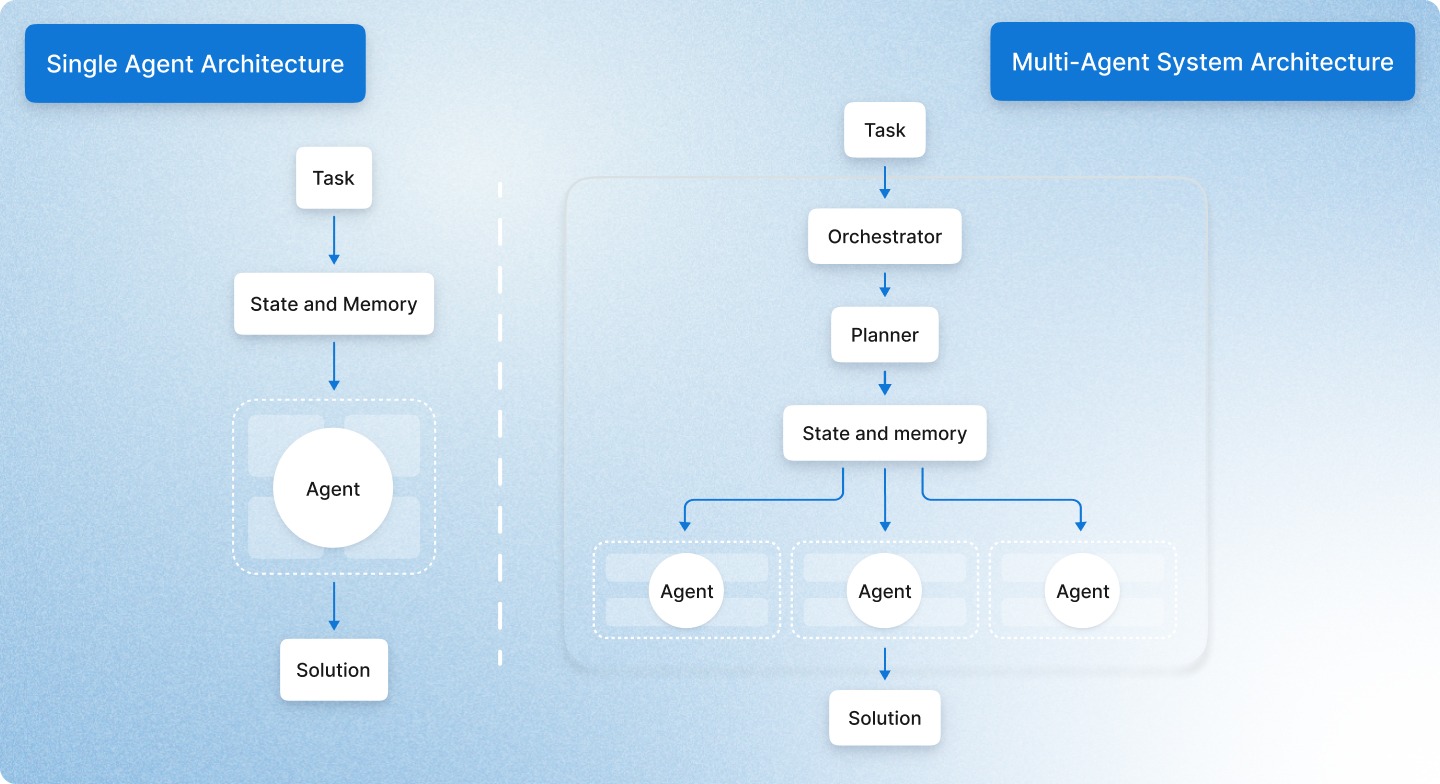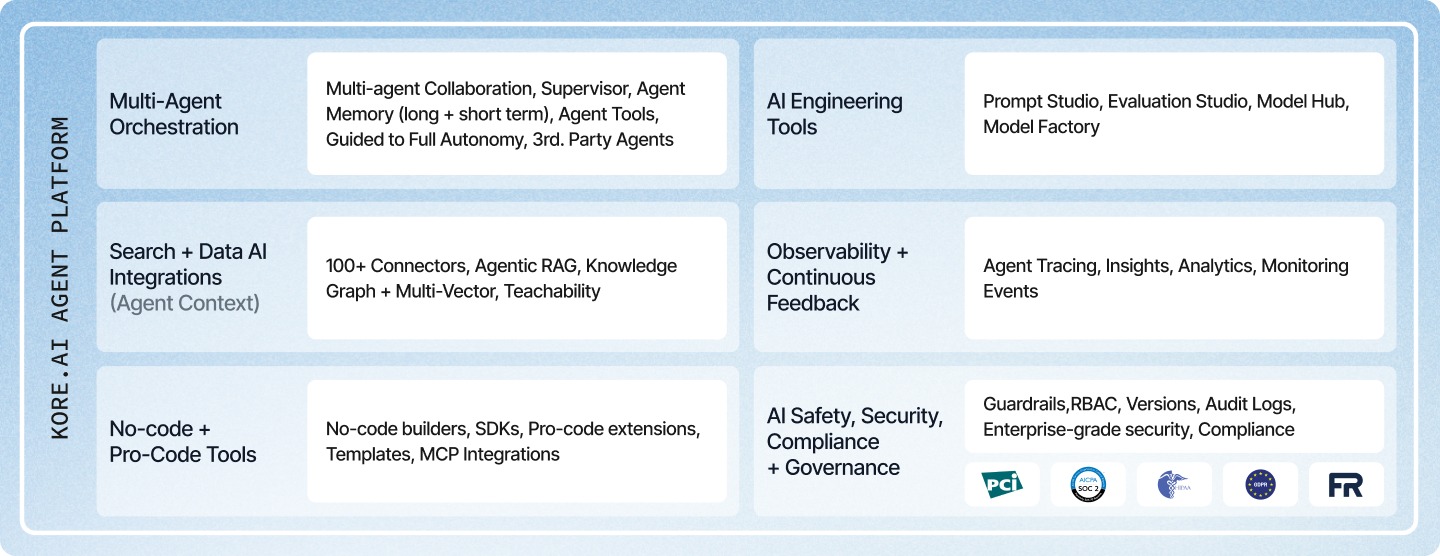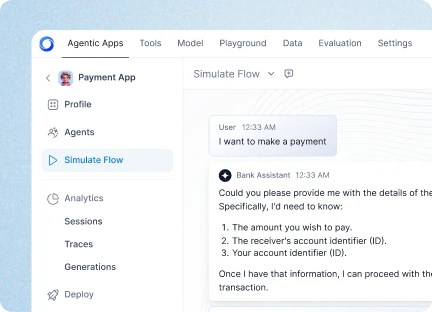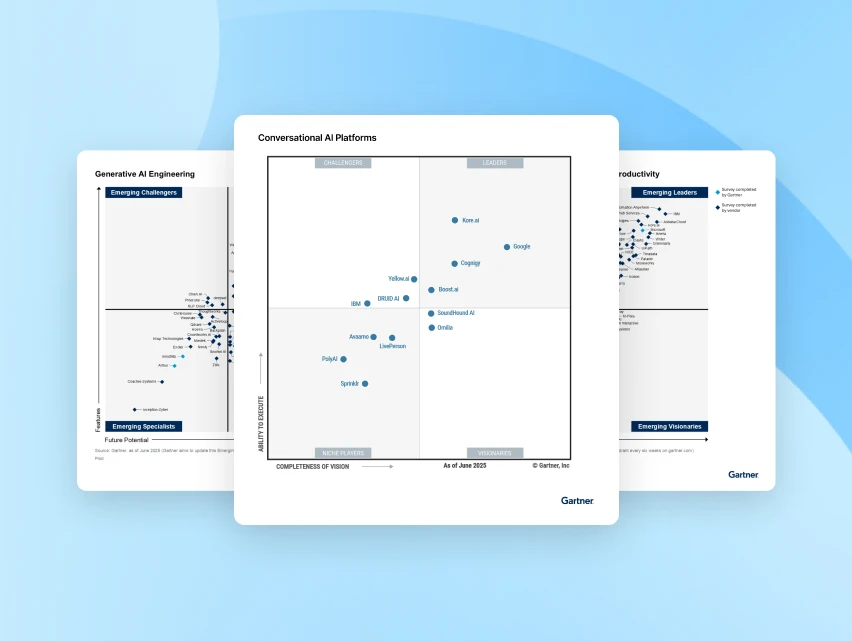Agentic architecture: Blueprint for intelligent enterprise
Here’s how enterprises can lay the foundation for agentic AI at scale.
Agentic AI has been pitched as a great leveller, as it allows intelligence to flow freely between humans and machines, enabling decisions and actions to unfold with remarkable independence. These agents are quickly becoming part of the workforce, dissolving traditional hierarchies and stepping into roles once held by humans.
Yet, for all their promise, the reality is that most enterprises today aren’t architecturally ready for this kind of autonomous intelligence. Their technology environments were built for static processes, NOT for dynamic intelligence. Such systems will collapse under the load of AI agents issuing thousands of queries a minute.
To become agentic-ready, enterprises require a fundamental rethinking of how their digital foundations are built and governed. They need Agentic Architecture. It is the structural blueprint that enables AI agents to act with autonomy and have fluid coordination with other agents, humans, and data.
In this blog, we’ll explore what agentic architecture is, its underlying principles, and how enterprises can build it. We’ll also discuss the challenges and future directions that organizations must address as they evolve toward agentic readiness.
Key takeaways (The TL;DR)
Before diving into the specific, here’s what enterprises need to know:
- Traditional pipeline-based architectures break at scale. Agentic systems need shared memory, orchestration, and real-time context flow to function.
- Agentic architecture is a foundation of autonomous enterprise. It’s a shift that changes how decisions are made and how intelligence flows across the enterprise.
- Agentic architecture creates a compounding advantage. When agents learn and share with other agents, the organization gets smarter over time.
- Enterprise readiness requires governance by design. Agent actions must be explainable and aligned with business through agent lifecycle management.
Agentic architecture: the foundation of intelligent enterprise
Agentic architecture is the underlying structural and design framework that enables AI systems to act with autonomy and accountability. It defines how AI agents perceive their environment, coordinate with other agents and humans, and make decisions to achieve complex goals.
Unlike traditional automation, which is built around fixed workflows, agentic architecture supports adaptive coordination, allowing agents to reason about tasks and collaborate dynamically across data and environments, without constant human intervention.
Put simply, agentic architecture transforms AI from a task executor into a goal-oriented operator. Think of it as the foundation of the intelligent enterprise, where AI agents, humans, and data operate as one cohesive ecosystem.
Why agentic architecture matters: from static systems to context-aware intelligence
Most enterprise systems today were designed for a world where humans made decisions and machines executed them. Data sits in silos, whereas automation is limited to predefined steps. This works great when humans are the ones making decisions, because we can read between the lines and make sense of things.
But agentic AI works differently. Rather than relying on static databases, AI agents need to understand not just the data, but the context around it. They need to know how things connect and why it matters. Traditional architectures cannot support this level of dynamic interaction.
That’s what agentic architecture makes possible. It creates a context-aware ecosystem where knowledge moves freely and intelligently across the organization. AI agents can access the right information quickly, interpret it on the spot, learn from it, and feed that intelligence back to the organization so that the whole team, including other agents, can learn from it. Over time, this intelligence compounds, creating organizational memory that improves decision-making everywhere.
Let’s see how this looks in practice with an example.
In most companies, onboarding a new employee involves pulling structured data (such as roles, location, departments, and training requirements) from HR systems and then combining it with unstructured materials (like team norms, training documents, process guides, or cultural insights). HR managers then connect these dots manually to create personalized onboarding experiences.
Meanwhile, in an agentic setup, AI agents can automatically learn from past onboarding patterns, learn which approaches worked best for specific roles or teams, and design more personalized experiences automatically. Each new hire enhances the system, and every department benefits from the accumulated knowledge.
Agentic architecture is the foundation for a more intelligent, responsive organization. It allows:
- Faster decisions - Agents can interpret intent, access context instantly, and act within safe boundaries.
- Continuous learning - Every process and interaction adds to collective memory, making the system smarter over time.
- Improved architectural resilience - Because agents operate through modular and interoperable layers, new capabilities can be added or replaced without disruption.
Foundational principles of agentic architecture: Pillars of autonomy
Agentic architecture is built on a set of principles that define how AI agents behave, operate, collaborate, and scale across the enterprise. Think of these foundational principles as the building blocks that make an AI system truly agentic. Together, they form the framework that allows intelligence to move safely and effectively through an agentic-ready enterprise.
1. Autonomy and agency
At the heart of agentic systems lies autonomy. It’s the ability of AI agents to make decisions and take action without direct human intervention. But autonomy in an enterprise setting doesn’t mean unlimited freedom. It’s structured autonomy, operating within defined boundaries of authority and compliance.
Agentic architecture provides this structure. Through layered governance and permissions, agents can act independently where appropriate, yet escalate decisions when context or risk demands it. This balance between freedom and control is what enables intelligent systems to scale safely across business functions.
2. Goal-directed behaviour
Every agent operates with intent. Instead of executing isolated tasks, agents pursue structured goals that roll up to business outcomes. Agentic architecture enables goal hierarchies, from strategic objectives down to micro-level actions, so agents always understand why they are acting, not just what they should do.
For enterprises, this translates into alignment at scale: each autonomous process contributes directly to business outcomes, ensuring that AI decisions remain goal-consistent even as they evolve.
3. Environment awareness and perception
Just like humans, agents need awareness of their environment to act intelligently. Agentic architecture equips them with the ability to perceive context and to interact meaningfully with systems, tools, and people.
This principle ensures AI systems are responsive to real-world conditions, such as shifting market signals or evolving customer needs.
4. Orchestrated collaboration
Unlike traditional systems that work in silos, agentic systems thrive when they work collectively. Orchestration ensures that multiple agents, each with their own capabilities, can operate together without duplication, conflict, or drift from the overall objective. This principle creates cohesive system behavior even when thousands of agents operate in parallel.
5. Learning and adaptation capabilities
Traditional AI models require periodic retraining to stay relevant. Agentic systems, on the other hand, are designed for continuous learning. They update their understanding in real time, refine strategies, improve predictions, and adapt to new inputs as they appear.
This capability allows agents to grow more effectively the longer they operate. For enterprises, continuous learning transforms operations from static automation into self-improving systems.
Core components of agentic architecture: The three-tier intelligence model

A modern enterprise AI architecture requires a layered ecosystem that connects knowledge, reasoning, and action. Each layer plays a distinct role that works in coordination with the others to support autonomy and alignment across the organization.
A practical way to understand this structure is through a three-tier architectural model.
The Foundation Tier to The Workflow Tier to The Autonomous Tier
Each tier builds upon the previous one, from foundational intelligence to orchestration and finally to autonomous execution. Together, they create an agentic architecture. Let’s discuss each one in detail: 👇
The foundation tier: State & memory, and knowledge
This tier forms the core intelligence base of the agentic system. It manages how information is stored and understood. It’s the foundational tier that provides the stability and intelligence backbone that all higher layers depend on.
This tier contains two core components: State & memory, and the knowledge layer.
1. State & memory
State tracks what is happening right now, such as the goals being pursued, the actions taken, dependencies, and the outcomes achieved. This ensures agents act with context rather than starting from scratch every time.
Memory, on the other hand, provides continuity over time. It helps agents to recall not just “what happened five seconds ago,” but “what this customer prefers,” “what was said last week,” or “what worked last time.”
There are two types of memories: short and long.
- Short-term memory helps keep the flow during a task or conversation.
- Long-term memory stores make durable knowledge, such as customer history or business rules.
Together, state and memory help agents behave coherently, just like human teammates who remember what matters.
2. Knowledge layer
Agents can’t work in isolation. The knowledge layer connects them to enterprise data and domain context. This layer uses tools like vector databases, enterprise search, and RAG to ground responses in facts.
Knowledge layer unifies structured and unstructured information, such as CRM data, policies, external APIs, and documents, into a shared context that agents can reason over. This reduces hallucinations and ensures answers reflect enterprise truth.
The workflow tier: Planning and orchestration
If the foundation tier gives agents understanding, the workflow tier converts that understanding into action. It decides how different components work together, manages sequencing, and ensures the right agent handles the right task in a conflict-free manner.
This layer contains two core components: Planner and Orchestrator
1. Planner
The role of a planner in agentic architecture is to break a high-level business objective into small, executable steps. It designs dependencies, sequences tasks, and determines what needs to happen, in what order, and why. It also ensures actions are explainable and aligned with enterprise logic.
For instance, it turns “launch a customer outbound campaign” into “segment audience tp generate emails to schedule outreach to track responses.”
Essentially, the planner bridges intent and execution.
2. Orchestrator
If the planner decides what needs to be done, the orchestrator decides who does it and when.
The orchestrator is the manager of an agentic system. It decides which agents should take on a given task, in what order, and how results should be merged into a clean result. It can route tasks sequentially, in parallel, or conditionally, depending on complexity.
The orchestrator also monitors progress and resolves conflicts or overlaps. It ensures smooth handoffs, maintains system integrity, and keeps operations aligned with the overall objective.
Simply put, without orchestration, multiple agents can’t function properly and risk inefficiency, duplication, or worse, total chaos. With it, they move as one.
The Autonomous Tier
This is the action layer, where intelligence becomes operational. It’s where AI agents interact with systems, people, and external environments to deliver results. This layer contains two core components: AI agents and Tools & APIs
1. AI Agents
AI agents are the workhorses of the agentic framework. These are the autonomous entities that have reasoning capabilities and access to the right tools and APIs. They operate independently but remain guided by the orchestrator and planner.
One agent might handle document analysis. Another agent might detect fraud. A third agent might handle customer routing.
2. Tools and APIs
Agents become truly actionable only when they can interact with enterprise systems. That’s where APIs come in. They let agents trigger transactions, fetch data, update workflows, and connect with CRMs, ERPs, HR systems, or cloud platforms.
Without connectors, agents would be smart but powerless. Only through these tools can agents perform tangible actions and become enterprise-ready.
For enterprises, the autonomous tier represents the interface between architecture and impact. It’s where autonomous decision-making translates into business outcomes.
TL;DR:
The foundation tier provides memory and knowledge. The workflow tier turns that understanding into structured plans. And the autonomous tier executes those plans while feeding new insights back into memory. Together, these three tiers form a closed intelligence loop:
Perceive → Plan → Act → Learn
Types of agentic architectures: Different patterns of autonomy
Agentic architecture isn’t one-size-fits-all. It can take different structural forms depending on how agents interact and how much autonomy they’re given. The table below shows some of the agentic architecture types and their differences.

1. Single-agent architectures
It is a standalone AI agent that operates independently, pursuing a specific goal without coordinating with other agents.
For instance, it can be a customer support agent that autonomously resolves Tier-1 queries, updates CRM records, and sends follow-up emails.
This type of system is ideal for focused, self-contained workflows and helps reduce manual workloads. This is often the starting point for enterprise adoption of agentic AI.
A single-agent architecture is best used when:
- Tasks are narrow and well-defined
- Speed and autonomy are critical
- No cross-functional coordination is needed
Example use cases:
- An HR policy assistant who answers employee questions
- A lead qualification agent for marketing
- A reporting agent that drafts weekly summaries

2. Multi-agent architectures (MAA)
In contrast to a single agent, a multi-agent architecture is a network of agents that collaborate, each with specialized roles, to achieve complex, cross-functional goals.
Think of this as a team of specialists working together. In a multi-agent architecture, agents communicate, delegate tasks, and share context, either horizontally (peer-to-peer) or vertically (hierarchical oversight).
For instance, in supply chain management, one agent forecasts demand, another manages vendor coordination, and a third oversees logistics, all working in sync.
Multi-agent systems typically operate in two modes: vertical and horizontal, each suited to different types of enterprise workflows.
2.1. Vertical multi-agent architecture
Think of vertical multi-agent architecture like a manager and their team. A lead agent acts as the intelligent orchestrator that delegates tasks to its subordinate agents, monitoring progress, and ensuring alignment with the overarching goal.
Each subordinate agent has a clearly defined role, and the agentic workflow typically follows a top-down, sequential path. For example, in a procurement workflow:
- A lead agent receives a purchase request
- It delegates to a compliance agent to validate vendor eligibility
- Then, to a finance agent to approve the budget
- Finally, to a logistics agent to initiate delivery
This type of agentic architecture is ideal for workflows that require approvals, checkpoints, compliance checks, and layered decision-making, which are common in finance, HR, legal, and operations.
2.2. Horizontal agentic architecture
In a horizontal agentic system, there’s no boss, and agents collaborate as equals. As there’s no central authority, agents work to their expertise, share context, solve problems together, and make decisions collectively.
These systems are designed for cross-functional coordination, especially when tasks span departments or domains. For instance, if an employee’s laptop breaks, then the IT agent diagnoses the issue, loops in the HR agent to check the equipment policy, and finally, the finance agent approves a replacement.
In another example, if a customer reports a billing issue that also involves a technical glitch. The billing agent verifies the transaction, and the tech support agent checks system logs. Together, they resolve the issue without bouncing the customer between silos.
Horizontal agentic architecture is ideal for creative problem-solving and dynamic workflows where the path isn’t fixed but the outcome matters.
3. Human-in-the-loop (HITL) agentic architectures

Essentially, human-in-the-loop agentic architectures are also multi-agent systems, but they also include human oversight or intervention at key decision points. While AI agents handle most of the workflow, they escalate decisions, seek approvals, or incorporate feedback from humans when needed.
For instance, in financial underwriting, an agent gathers data and drafts recommendations, while a human reviews and approves final decisions. The human-in-the-loop agentic system balances autonomy with accountability, ensuring trust and control in sensitive workflows.
The HITL agentic system is best used when:
- Full automation isn’t feasible or desirable.
- Trust and transparency are as important as performance.
- Human expertise is needed to guide, correct, or approve autonomous actions.
Example use cases:
- AI-driven underwriting with human approval
- AI legal drafting with attorney review
For enterprises, this model builds confidence and compliance. It ensures that autonomy grows safely and within human-defined guardrails.
4. Self-organising (emergent) architectures
Self-organising or emergent architectures represent the most advanced stage of agentic maturity. In this type of agentic architecture, agents dynamically form, dissolve, and reconfigure groups based on real-time goals and context. There is no fixed hierarchy, which means agent clusters emerge as needed and dissolve when tasks are complete.
This architecture thrives in complex, fast-changing environments where adaptability and resilience matter more than strict control. Because agents can reconfigure themselves, the system can respond to new goals or disruptions almost instantly, without waiting for top-down orchestration.
Self-organising architectures are best suited for:
- Large-scale or rapidly changing ecosystems, where static workflows can’t keep up with shifting goals.
- Cross-functional enterprise systems where agents must cooperate across business domains without constant oversight.
- Innovation-driven environments, where emergent collaboration often leads to new insights or creative solutions.
Emergent architectures mark the transition from automated processes to self-optimising enterprises. However, it also demands strong governance, observability, and responsible AI frameworks to make sure emergent behaviour remains aligned with business intent.
Building agentic architecture: Two paths to enterprise adoption
Now you know why agentic architecture matters, the next question is: how do you actually build it at scale?
In practice, enterprises have two distinct paths to build agentic architecture:
- Use agentic frameworks - these are toolkits that let you experiment and build your own agentic systems from the ground up.
- Use agentic platforms - these are enterprise-ready environments with no-code or low-code capabilities, deployment tools, governance, and security baked in.
While both serve the same purpose of helping you build agentic systems, they differ in how much control, flexibility, and operational maturity they provide.
Let’s understand both of them in detail:
Path 1: Agentic frameworks: Toolkit to build it yourself
Agentic frameworks provide the foundational building blocks of agentic systems, such as planning, memory, state management, and communication layers, but leave the assembly, integration, security, and governance to you.
Some of the commonly used frameworks include LangGraph, CrewAI, Swarm, AutoGen, FIPA, JADE, n8n, and ARCADE, among others. Though they provide flexibility, they also require engineering depth and architectural effort to build and manage these systems responsibly.
Agentic frameworks are ideal for teams that want to experiment and explore what’s possible with agentic systems before scaling them.
Key characteristics of agentic frameworks:
- Developer-centric: Designed for teams who want to experiment and build every component themselves.
- Highly customizable: Teams can define their own reasoning logic, control flows, and integration points.
- Interoperable: Frameworks work well with existing systems, APIs, and models
Agentic frameworks are ideal when you want:
- Maximum control over agent logic, integrations, or governance.
- An experimental or research phase where you need to iterate rapidly and build “your way.”
- Highly domain-specific customization that off-the-shelf agent platforms cannot support.
- Low-level visibility and observability, so every decision, memory access, and tool call is fully traceable.
Path 2: Agentic platforms: Infrastructure of scale

Agentic platforms, on the other hand, are enterprise-ready environments for developing, deploying, and managing AI agents at scale. They cut the technical complexity, offering no-code or low-code interfaces, built-in governance, and operational tools, making it easier for business and IT teams to collaborate.
Think of platforms as the operating system for agentic systems. They provide the infrastructure, orchestration, monitoring, and security so that your teams can focus on designing workflows and outcomes, not wiring the backend.
Key characteristics of agentic platforms
- No-code, low-code, or pro-code development: Enables business users and non-technical teams to build and deploy agents in no time.
- Built-in orchestration and monitoring: Manages task execution, dependencies, and performance tracking automatically.
- Governance and compliance by design: Includes access controls, audit logs, sandboxing, and other enterprise safeguards.
- Model and tool flexibility: Most platforms allow you to connect any language model or third-party API of your choice.
- Scalable and secure: Handles deployment, scaling, and system reliability behind the scenes.
Agentic platforms shine when you want:
- Speed of deployment - you want agents live, running, not months from now.
- Operational maturity out of the box - monitoring, deployment pipelines, security, auditing, rollback, etc.
- Broader stakeholder adoption - letting business teams, product owners, and domain users define agent behavior without needing deep engineering work.
- Scalability and reliability without reinventing agent infrastructure.
How should enterprises choose between agentic frameworks vs agentic platforms?
Both agentic frameworks and agentic platforms play a role in the enterprise journey, but they serve very different purposes.
Agentic frameworks are great for experimentation because they give full control over agent behavior, but they lack the enterprise essentials needed for production. They don’t provide built-in security, observability, authentication, audit trails, rollback safety, or deployment pipelines. As a result, engineering teams end up building and maintaining infrastructure before delivering business value, which severely slows down enterprise adoption.
Agentic platforms exist to remove that friction. Instead of building the foundation yourself, platforms give you an enterprise AI platform architecture out of the box, with security, orchestration, lifecycle management, interoperability, observability, and governance. This shifts teams from building infrastructure to building real agent capability aligned to business goals. It’s due to this reason that 72% of enterprises prefer buying AI solutions over building them from the ground up, according to the AI use case report.
As Raj Koneru, CEO of Kore.ai, explains in his recent podcast: “Building everything from scratch is expensive. Most open-source frameworks lack enterprise-grade reliability, security, and support. Most enterprises don’t have the skills or bandwidth for that. What they sacrifice is speed – speed to build, speed to market, and speed to maintain. Enterprises need to decide where they want to spend their energy, be maintaining an AI agent platform or building intelligent agents that drive business value.”
He also emphasized that the right agentic platform should give enterprises the freedom to build on top of it: “Choose a platform you can live with for the next decade. It should be model-agnostic, data-agnostic, and cloud-agnostic so you can use any LLM, connect to any enterprise data, and deploy anywhere. It must also conform to new open standards like A2A and MCP as well as existing enterprise security standards.”
This is why enterprise leaders increasingly view agentic platforms as the operating system of the intelligent enterprise, as they democratize agent building while ensuring trust, governance, and scale across business functions.
Barriers to agentic transformation (and how to overcome them)?
Agentic architecture isn’t a layer you bolt on. It’s a fundamental redesign of how intelligence flows across the enterprise. As Bain notes, “most organizations overestimate their technical readiness and underestimate the cultural and governance shifts required to support autonomous systems.”
Here are the five most common barriers enterprise leaders should be prepared for when implementing agentic architecture and how to overcome them effectively. 👇
1. Outdated systems and architectural rigidity
Most enterprise AI architectures still run on hard-coded workflows that were never designed for autonomous, context-aware decision-making.
Agentic systems, by contrast, thrive on real-time context exchange and dynamic orchestration between agents, data, tools, and humans. Legacy architectures can’t support that flexibility, leading to brittle integrations and slow context refresh.
To mitigate this challenge, enterprises must:
- Move gradually toward event-driven, API-first architecture
- Introduce abstraction layers so agents can interact safely with legacy systems
- Modernize data pipelines to support real-time state and context
By gradually decoupling rigid workflows and building modular services, enterprises can create the foundation for scalable, agent-ready environments.
2. Fragmented data and context silos
Agentic systems don’t just rely on data; they rely on context. But most enterprise data still lives in silos, such as CRMs, ERPs, HR platforms, and knowledge bases, each using different structures and semantics.
Agents can’t act intelligently if they can’t interpret relationships across data systems, leading to poor reasoning, duplicated efforts, inconsistent decisions, and broken coordination between agents.
To address this, enterprises must:
- Build a semantic layer or enterprise knowledge graph that unifies structured and unstructured data
- Enable context-sharing between agents using Model Context Protocol (MCP)
Only when data becomes contextually linked, agents move from task automation to intelligent collaboration.
3. Governance and accountability
Agentic systems distribute decision-making across multiple autonomous entities. While that improves agility, it also makes ownership and oversight harder to define. Who is accountable when an agent acts incorrectly or outside policy?
Without strong governance, agent actions can go unchecked, undermining both compliance and trust.
To mitigate this, enterprises need to:
- Create governance playbooks for escalation and approval of autonomous actions.
- Implement audit trails and explainability modules that document each agent’s reasoning and outputs.
- Keep humans in the loop for high-risk or regulated use cases.
The goal isn’t to limit autonomy but to ensure it operates within transparent, accountable boundaries.
4. Operational cost and infrastructure load
Running agentic systems can be highly compute-intensive. With multiple agents reasoning, reflecting, and communicating simultaneously, compute and storage demands rise sharply, especially when large language models are used for every task.
Even advanced enterprises can severely underestimate the cost of agent deployments, making it economically unsustainable and eroding ROI.
To overcome this challenge, enterprises must adopt a cost-to-performance model. This essentially means using lightweight models where possible and researching advanced models, like ChatGPT-5, for highly complex tasks.
In addition, they should continuously monitor usage and performance metrics to maintain an efficient balance between accuracy and cost.
5. Organizational and cultural resistance
Perhaps the most underestimated challenge isn’t technical; it’s human. Agentic transformation changes how teams make decisions, define roles, design workflows, and measure success.
Force-fitting agents onto broken workflows can result in employees viewing agents as replacements rather than collaborators, or worse, stalling adoption altogether.
To prevent this, enterprises must:
- Treat this as organizational design, not just system design
- Co-create workflows with teams that will use them
- Form cross-functional AI squads across business + IT + governance
Enterprises that invest in education, transparency, and co-creation will experience smoother adoption and faster ROI.
Future of agentic architecture: Rise of agentic enterprise
Future enterprises will evolve into what we can call the Agentic Enterprise - an organization powered by thousands of AI agents operating in sync, executing tasks, making decisions, and adapting in real time.
In this reimagined enterprise, it will look less like a rigid hierarchy and more like a network of human leadership supported by swarms of specialized AI agents that handle the execution and continuously learn.
But this future brings both promise and pressure. Microsoft projects that by 2028, more than 1.3 billion AI agents will be operating globally across enterprises and ecosystems. At that scale, the challenge will shift from building agents to governing them. The rise of AI employees will demand a resilient enterprise AI platform architecture capable of managing thousands of autonomous agents
Enterprises with AI architectures that are model-agnostic, cloud-agnostic, and capable of managing the full lifecycle of agents, from creation and deployment to monitoring and retirement, will lead this transformation.
In this future, architecture becomes more than infrastructure; it becomes digital governance and operational intelligence. The enterprises that invest in agentic readiness now will define the next decade of AI leadership.
Final words: Design for autonomy
Agentic architecture is a reinvention of how enterprises think and operate. It marks the shift from process-centered systems to intelligent, goal-driven ecosystems where humans and AI agents work together to drive outcomes.
But this future won’t be achieved through isolated pilots or LLM experiments. It requires architectural discipline. Enterprises cannot scale autonomy on brittle systems or fragmented tooling. They need agentic readiness at the architecture level.
That’s where a platform strategy becomes essential. Kore.ai provides the enterprise agentic platform architecture required to scale responsibly. It is:
- Model agnostic - use any LLM or small model of your choice
- Data agnostic - connect securely to any enterprise or external data source
- Cloud agnostic - deploy in any environment, public or private
- Standards aligned - fully compatible with emerging agent standards like A2A and MCP
- Enterprise governed - built-in security, observability, and lifecycle control
Ready to build your agentic future? Talk to us. Not ready yet? Head to our resource section and learn how Kore.ai can help you.
FAQs
Q1. What is AI agent architecture?
AI agent architecture refers to the structural design that enables AI agents to perceive context, make decisions, plan actions, and interact with systems autonomously. It connects memory, reasoning, tools, and governance so agents can operate reliably inside enterprise environments.
Q2. How is agentic architecture different from non-agentic architecture?
Traditional AI architecture automates predefined steps using rules or workflows. In contrast, agentic architecture enables adaptive intelligence; AI agents reason, make decisions, and collaborate dynamically instead of following static instructions. It moves AI from task execution to goal-driven autonomy.
Q3. What are some use cases of agentic architecture?
Agentic architecture can power autonomous workflows across industries, including:
- Customer service agents who resolve issues end-to-end
- Financial underwriting agents with human-in-the-loop review
- Supply chain monitoring and decision automation
- AI sales assistants that run campaigns and follow-ups
- HR onboarding agents that personalize employee journeys
- IT automation agents for diagnostics and incident resolution
Q4. What are agentic frameworks?
Agentic frameworks are developer toolkits used to build AI agents. They provide components like memory, planning, orchestration, and tool integration, but require engineering effort to deploy and maintain in production. Examples include LangGraph, CrewAI, AutoGen, and Microsoft Autogen.
Q5. What are the top agentic frameworks?
Some widely used agentic frameworks include:
- LangGraph - For graph-based agent workflows
- CrewAI - For collaborative multi-agent systems
- Microsoft Autogen - For agent interaction and task automation
- OpenAI Swarm - Lightweight agent collaboration framework
- AutoGPT - Early experimental agent framework
- FIPA + JADE - Classic academic agent frameworks for distributed AI
Q6. What is the difference between agentic frameworks and agentic platforms?
Agentic frameworks help teams experiment and build agents manually, while agentic platforms provide the infrastructure to deploy agents at scale. An enterprise AI platform architecture includes security, governance, monitoring, and lifecycle management, making it suitable for enterprise-wide adoption.












.webp)
.jpg)




